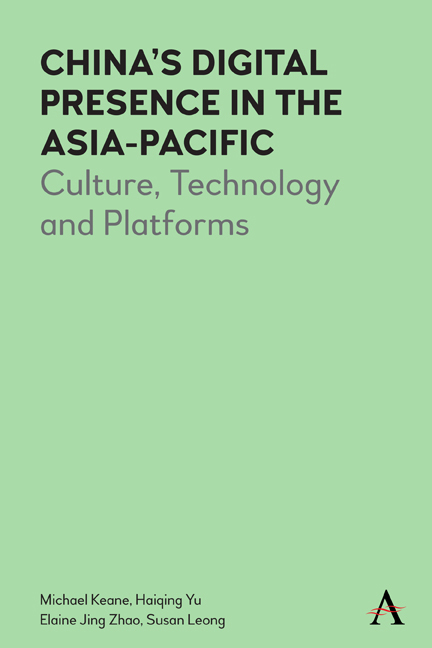3 - Internet +
Published online by Cambridge University Press: 20 January 2022
Summary
Chapters 1 and 2 charted the ‘upgrading’ of Chinese media, cultural and creative industries from the late 1980s to the present. The ‘two cultures’ –the domains of the sciences and the humanities –have come closer together. In this chapter we focus on the most significant addition to the industrial convergence lexicon in China, Internet +.
The history of internet development in China is often depicted as the history of the ‘Chinese internet’. Yet, scholars don't speak of an American internet, where the technology originated, or a South Korean, African or Australian internet. Of course, there are good reasons why the description Chinese internet applies, notably the draconian content filtering architecture known as the Great Firewall of China (GFC), the retention of user data on servers within China and the use of surveillance technologies to monitor the movements of Chinese citizens. Recent arguments have even made a compelling case for the emergence of ‘splinternets’ or alternative internets and sovereign understandings of how the internet is governed.
As discussed in previous chapters, media and cultural industries were regarded as the superstructure –the realm of ideology in China. The superstructure was the absolute embodiment of political culture; it reflected economic development, that is, the material base of objects, commodities and things. The superstructure had adapted the tiyong model of the early reformers, purging the ti of its feudal traditional elements and replacing it with Marxist theory. This base superstructure model offered a functionalist explanation of the world in the era prior to the 1980s. However, as Scott Lash and Celia Lury point out, ‘cultural objects are everywhere; as information, as communications, as branded products, as financial services, as media products, as transport and leisure services’. Culture has seeped out of the superstructure, infiltrating the infrastructure and becoming infrastructure.
To better understand the ramifications of China's global connectivity and how digital infrastructure is viewed in meeting the country's ideological agenda, this chapter sketches an outline of the development of the internet both as it pertains to international content entering China and Chinese content going out. With China's inevitable rise as a technological superpower, together with growing apprehension in the West about Chinese influence, research on Chinese internet control continues to grow.
- Type
- Chapter
- Information
- China’s Digital Presence in the Asia-PacificCulture, Technology and Platforms, pp. 47 - 66Publisher: Anthem PressPrint publication year: 2020



